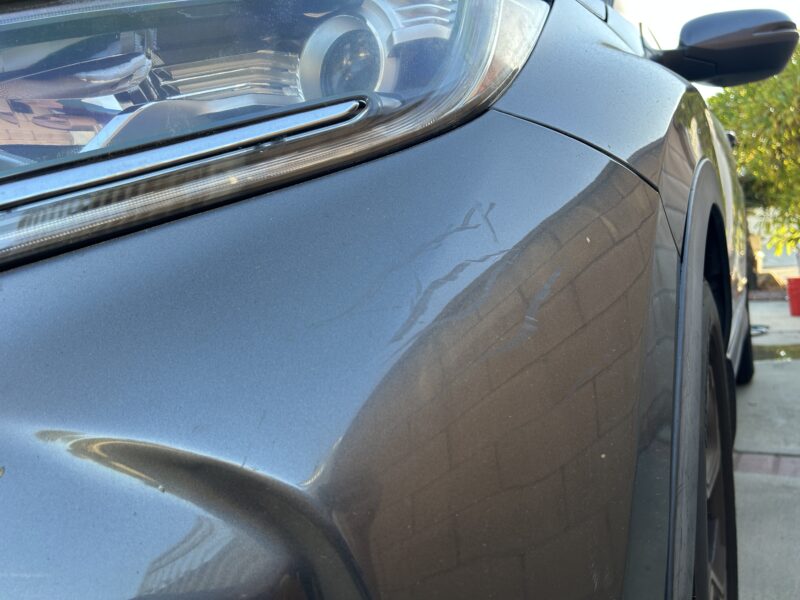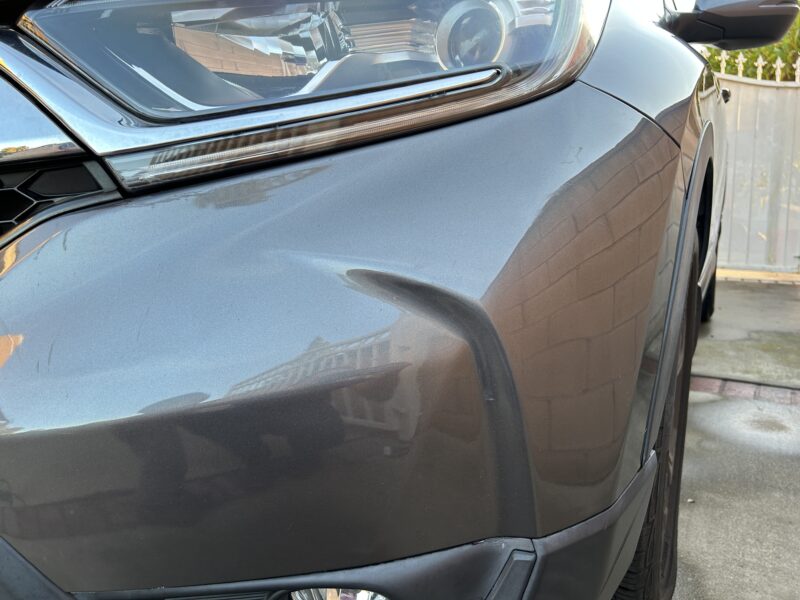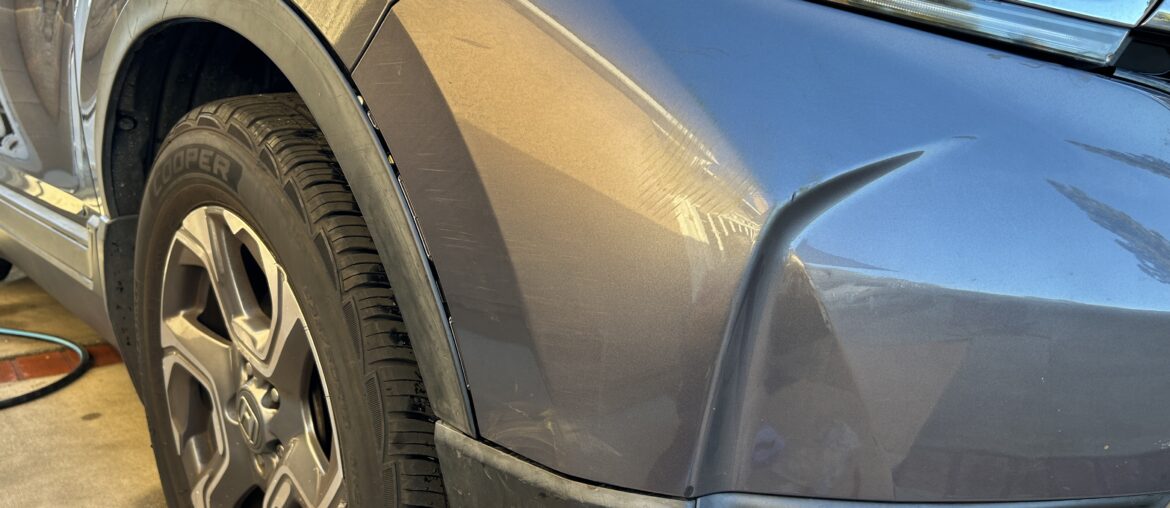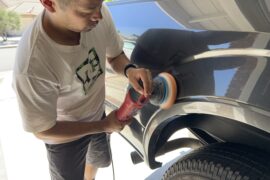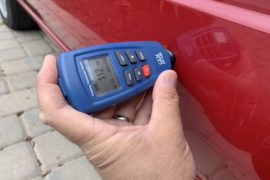When you make purchases through links on this site, The Track Ahead may earn an affiliate commission. Also, these posts are based off my own experiences. I am not responsible for any action you take as a result of reading this. Learn More
Bumpers tend to get the brunt of minor bumps and fender benders to vehicles. As a result, the bumper can get dented, broken, cracked, or scratched. Out of all these types of damage, the easiest to remove is a light scratch. I would also add that sometimes these “scratches” might actually be paint transfer, where paint has rubbed off of another vehicle onto yours. Paint transfer and light scratches are both easily removable with a machine polisher and compound/polish. If the paint from your bumper comes off, then you will need to resort to either a bumper respray or touch-up paint.
If you have scratches on your bumper, you will need to first know if the scratches are considered light or deep. If the scratch has gone through the clear coat into the paint (this would be considered a deep scratch), then you won’t be able to polish out the scratch. If the scratch has scratched the clear coat and has not penetrated the paint base coat, then this is considered a light scratch and can be polished out.
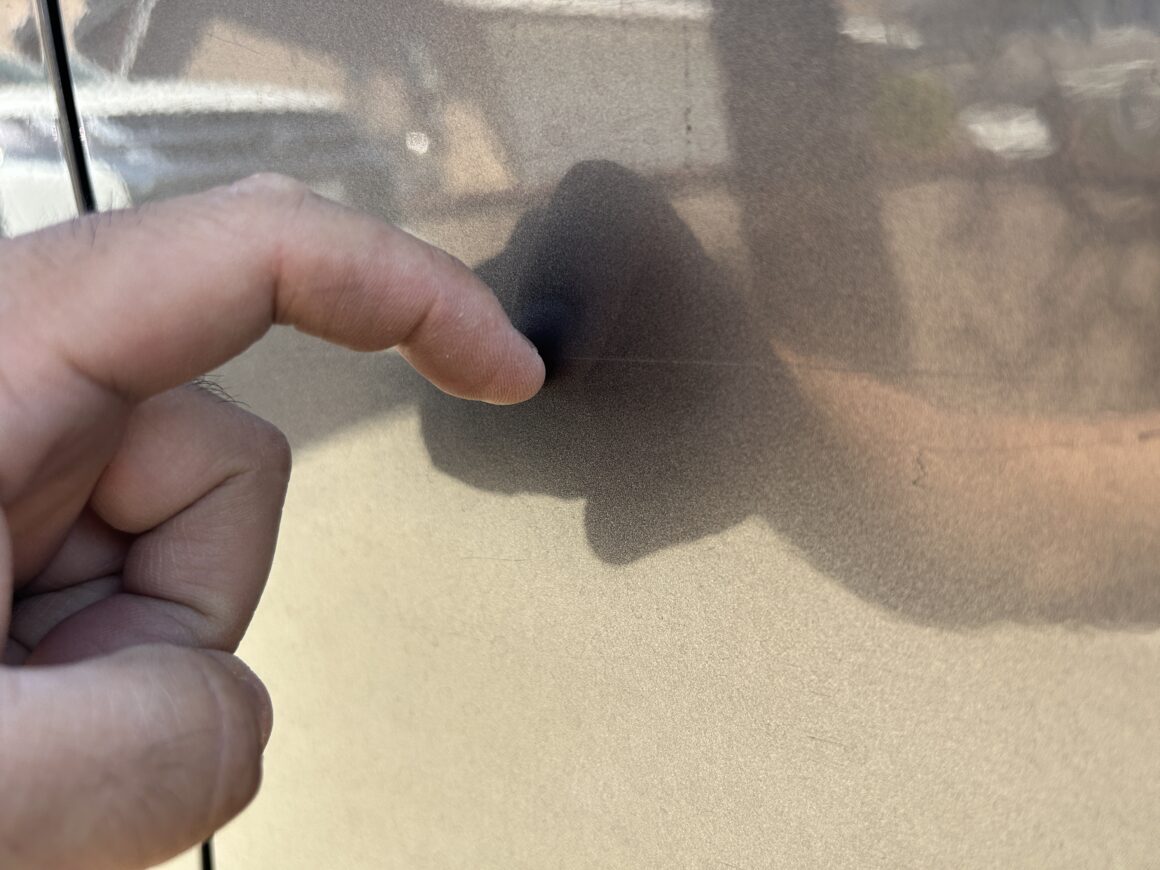
There is a simple test that you can do to check if the scratch is light or deep. Simply use your finger nail and scratch perpendicular across the scratch and see if you can feel the scratch. If you can feel the scratch with your finger nail tip, then it can be considered deep scratch and you cannot polish it out. If you don’t feel the scratch with your finger nail, then the scratch is considered a light scratch and usually can be polished out. Using this fingernail test can quickly give you an idea if you can polish the scratch(es) out or if you need to take a different approach for dealing with the deep scratch (e.g. touch-up paint.)
Technically for paint transfer, you could use paint thinner or nail polish remover as a way to remove the paint that is transferred onto your car’s bumper. Since the paint that you are removing is actually on top of your clear coat, it should only affect the paint that you want to remove and not your car’s paint which is protected under the clear coat. However, you never know what is happening on any one particular car, so it’s usually best to avoid using these types of chemicals, which can possibly damage your car’s paint.
The best way to address most light scratches on your bumper (and even paint transfer) is to use a machine polisher along with a compound product that has the aggressiveness to polish out the scratches. If you use a dual-action random orbital machine polisher, it is usually safe enough to use without worry of damaging your car’s paint.
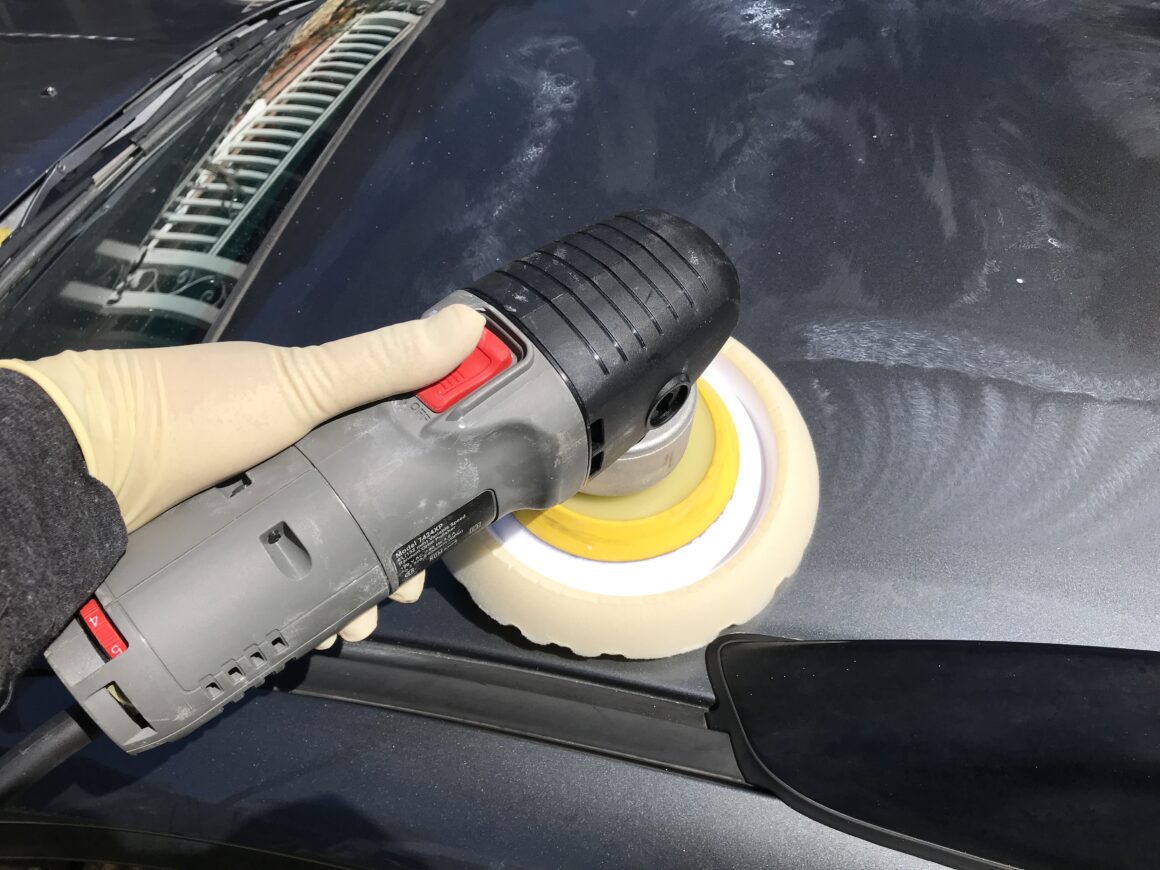
What you’re essentially doing with the compound and machine polisher is rubbing away the sharp corners of the light scratch. The scratch is visible due to the light not reflecting off of the imperfect clear coat surface. By rounding out the sharp corners of the scratch, we are making the damaged area flatter and more able to reflect light, resulting in the eventual removal of the scratch.

Tools & Materials Used
Dual Action (DA) Random Orbital Machine Polisher
Typical DA random orbital machine polishers will usually be adequate to handle most of the typical paint corrections, or in this case, removal of light scratches in the bumper. If you want some extra power (meaning less time polishing and more effective results), you can opt for a long-throw machine polisher. The random orbital dual-action motion of these polishers both rotate and spin (hence the name dual action) which reduces the chance of over-polishing, which can wear through your layers of protection prematurely.
Chemical Guys TORQX Random Orbital Polisher
Chemical Guys Torq 15mm Long-Throw Random Orbital Polisher
Polishing Pads
General foam polishing pads work well (yellow pad for more aggressive cut, or orange medium aggressive cut), however if you want the most effective cut with your polishing compound, you’ll want to go with a microfiber pad.
Meguiar’s Microfiber Cutting Disc, 2 Pack: 6-inch / 5-inch
POLIWELL Polishing Pads: 5.5 Inch (For 5-in Backing Plate), 7Pcs
Polishing Compound
One of my favorite compounds to use is Meguiar’s M100 Pro Speed Compound. I love it because it has an aggresive cut, but it also leaves a smooth finish that doesn’t need to be followed up with a polish afterwards. You can go with other compounds too and they will work, but you might need to follow up with a polish afterwards to refine the paint surface (to get the paint shiny again).
Meguiar’s M100 Pro Speed Compound
Microfiber Towels
Microfiber towels are a staple for people who clean and detail their cars. If you don’t have any already, you will need them here to wipe away the remaining dried up compound after polishing.
Chemical Guys (6-Pack) / Zwipes (48-Pack) / AmazonBasics (24-Pack)
How to Remove Light Bumper Scratches Using a Machine Polisher
Below is the example that I will be demonstrating this scratch removal process on. This Honda CR-V belongs to my mother in-law. As you can see here, you’ll find the whole gamut of bumper damage: dings, dents, and scratches all over her car. I’ll focus this post on removing the light scratches and paint transfer on the two corners of her front bumper.
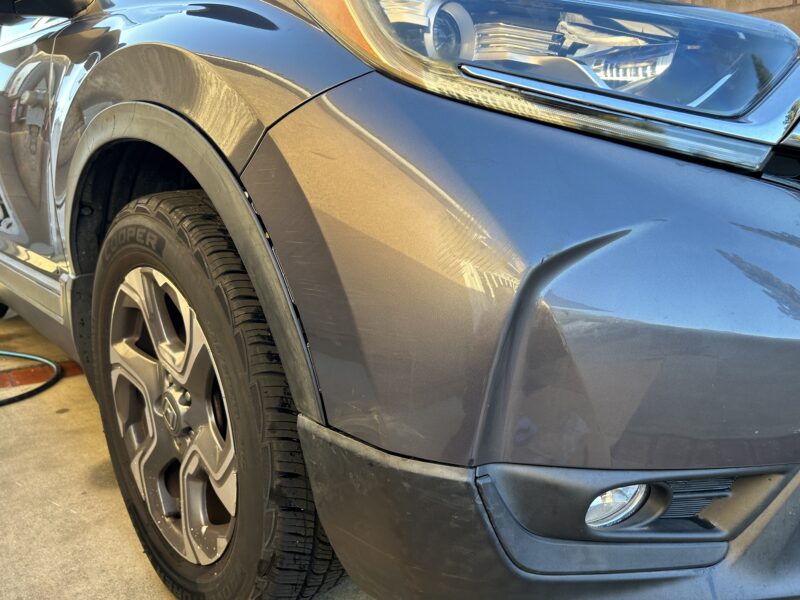

I won’t over-complicate things here. Using a machine polisher is fairly simple. You apply some compound to your pad to prime it (basically applying some compound to saturate your pad) and apply some compound on your bumper. Run your machine polisher at a higher speed across the bumper area using light and uniform pressure. Make sure the pad is flat on the bumper surface and slowly move across the bumper.
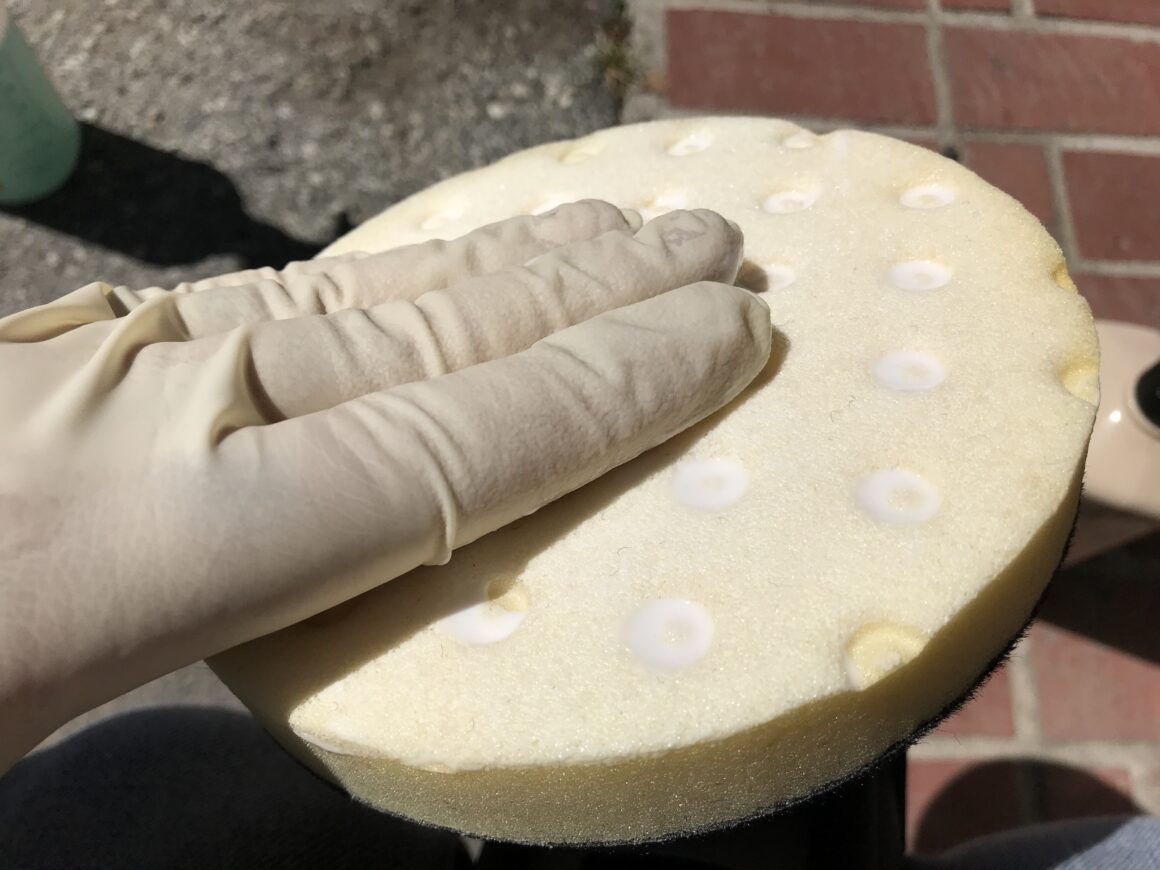
I’ve drawn a picture below showing how you would run the polisher, which would be in a hatch pattern. Make sure to move the polisher slowly as you move in one direction, overlapping passes just slightly, and then go in the perpendicular direction in the same way. Because the bumper is not exact square or completely flat, you will need to make some adjustments so as to not polish too much over body lines (which may lead to premature paint damage) and to also match the shape of the surface you’re working on.
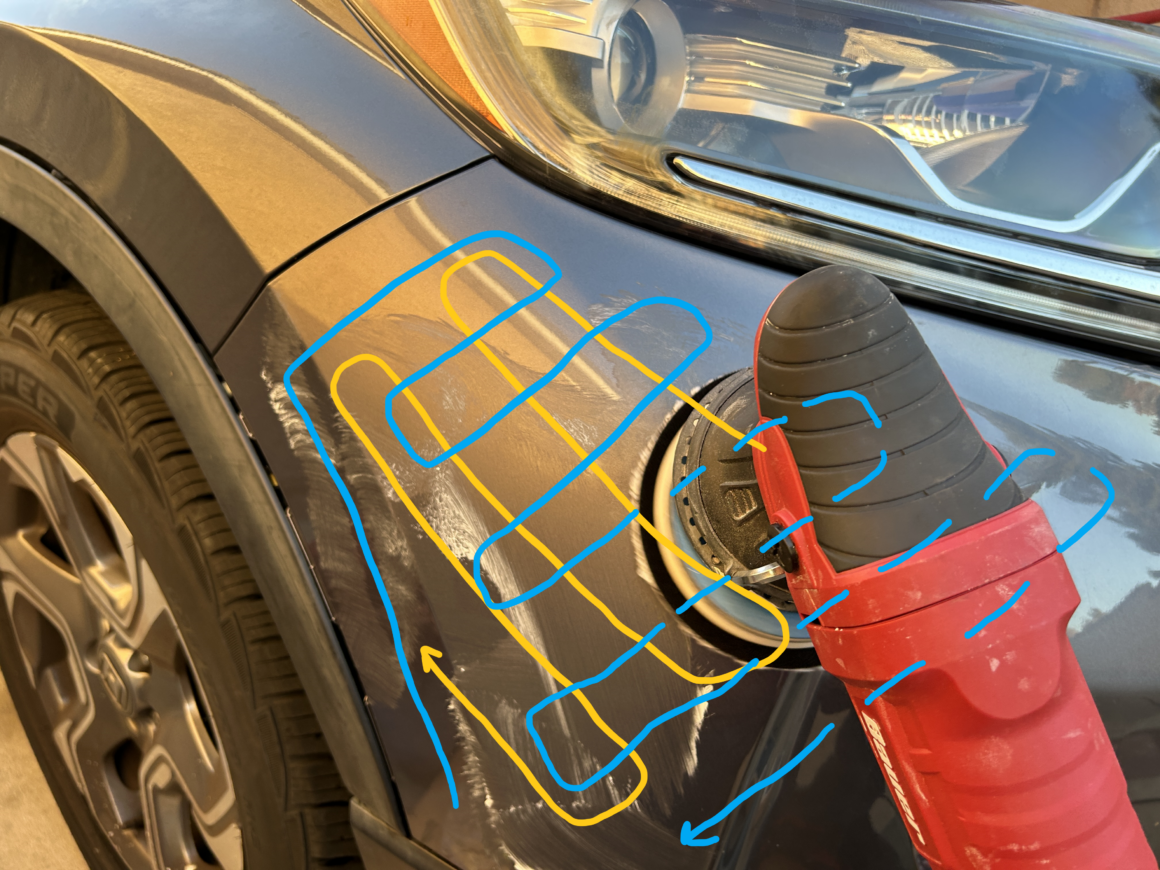
After making a couple of passes, grab a clean microfiber towel and wipe the residual compound away. Check your work and see if the light scratches (or paint transfer) has been removed. If it has not disappeared or has gotten lighter, you can try polishing the area again with more compound and in the same way.

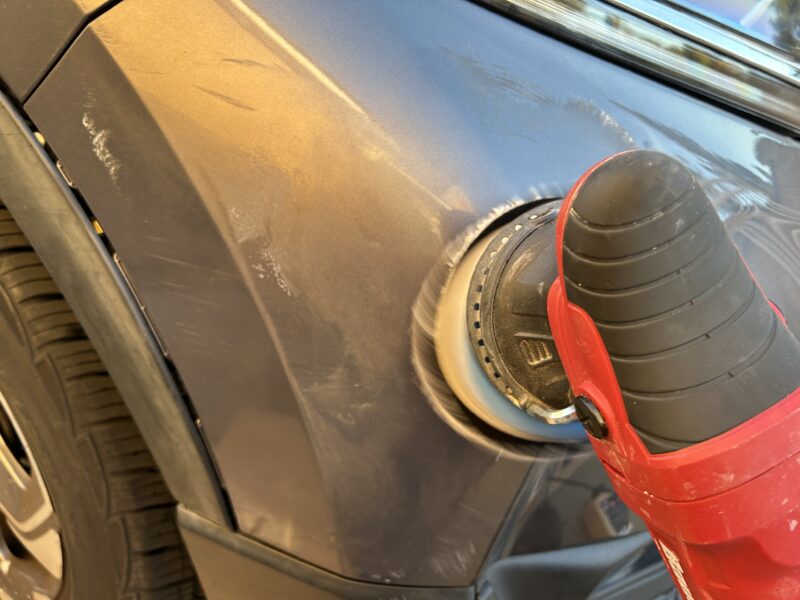

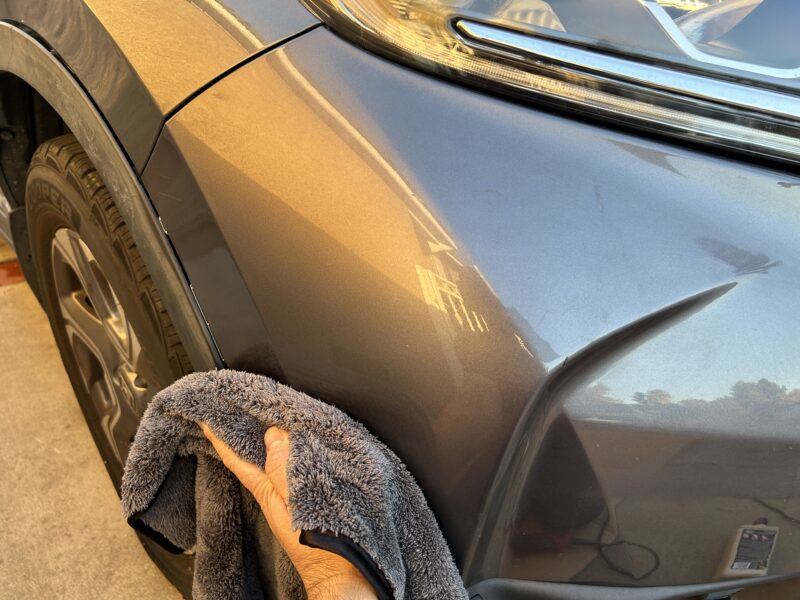
The reason why I recommend a product like Meguiar’s M100 Pro Speed Compound is because it acts like a one-step product. Typically you would compound and it might leave a slightly hazy surface, which you would then need to follow up with a polish in order to restore the paint’s shine. However, this product is aggressive enough to remove light scratches without the need for a follow-up polish, minimizing the number of steps to get the job done.
As you can see below, I spent about 5-10 minutes and made about 2-3 passes to get these kinds of results. It probably took more time to get the machine polisher, plug it in, put the pad on, and apply compound, than to actually polish itself. A simple machine polish can remove a lot of light scratching and paint transfer off of your car’s bumper, revealing an almost new looking bumper once again.
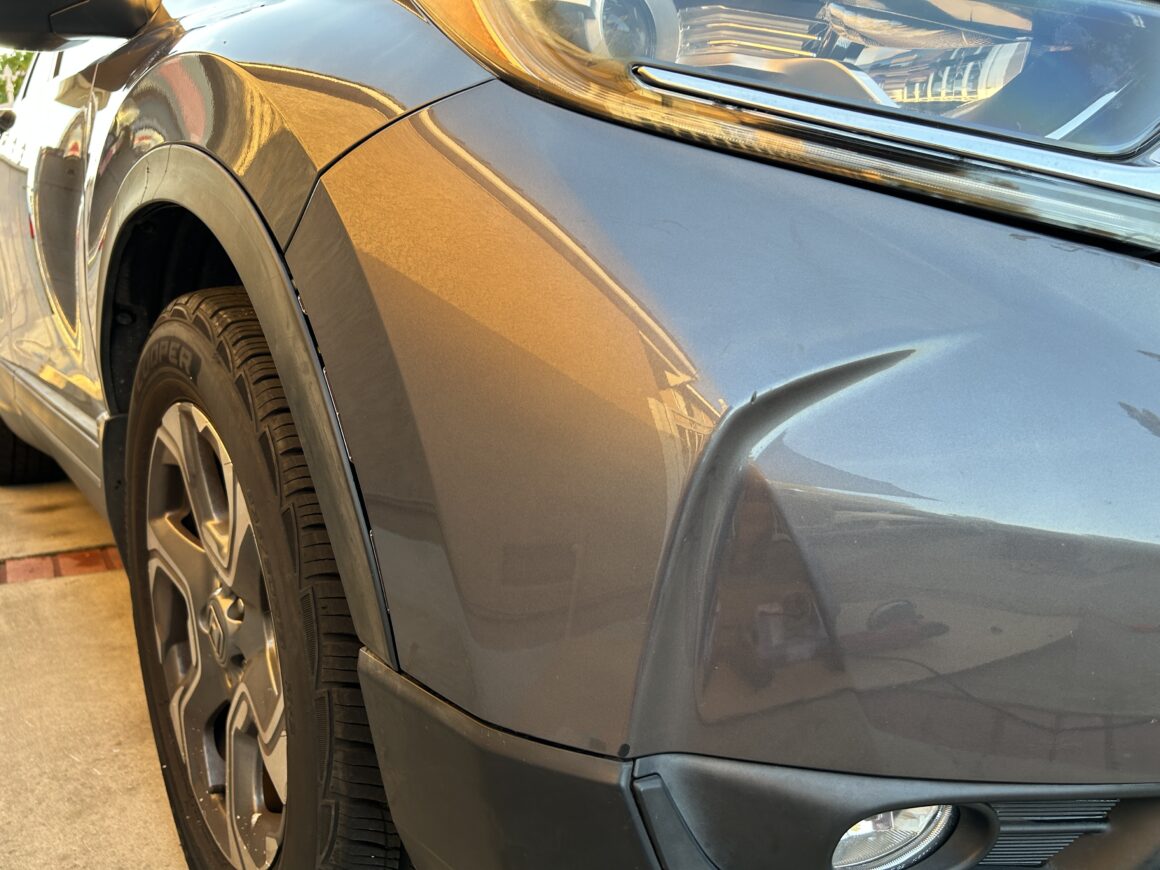
On the other corner of the bumper, I did the same thing and the results were very good here as well. It easily removed the squiggly lines created from rubbing. Any other light scratches were quickly removed as well. If you have similar-looking damage, a machine polish will easily and quickly resolve those issues as well.
